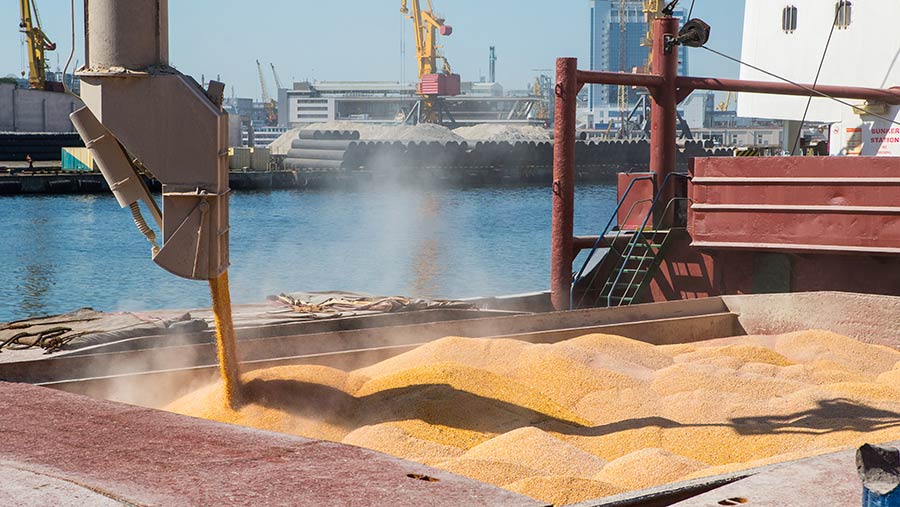Global grain markets volatile amid ongoing conflict
 © Alexey Lesik/Adobe Stock
© Alexey Lesik/Adobe Stock Grain prices continue to spike and fall in a volatile market heavily affected by the ongoing war in Ukraine and the subsequent supply disruption.
Prices gathered by Farmers Weekly on Wednesday 8 June averaged about £285/t ex-farm for spot feed wheat, down nearly £20/t on a week earlier.
November 2022 London feed wheat futures were at £304/t on the same day, up from £297.5/t seven days before.
See also: How to control yellow rust in wheat without epoxiconazole
However, this was down £13.5/t on the beginning of the week, when a bullish spur was influenced by global grain markets reacting to news of further disruption to shipments out of the Black Sea region as the Russia-Ukraine conflict intensified, said the AHDB.
Wheat markets then fell back as discussions continued, with the UN attempting to establish an export corridor for Ukrainian grain. If a deal is made and ports reopen, prices will start to see some pressure.
Elsewhere, French soft wheat condition has declined for the fifth week in a row, according to consultancy FranceAgriMer. This is due to extreme weather conditions, including both drought and hailstorms, during the past month.
Wheat harvests in the EU, US, Canada and Ukraine remain key watchpoints, as is crop condition in Brazil and Ukrainian supply for maize markets.
The UK’s 2022 wheat crop is estimated to produce 14.95m tonnes, an increase of 7% on last year’s crop and up 10% on the five-year average, said the AHDB.
Every region is estimated to rise in production, with the largest year-on-year rise (15%) expected in the eastern and south-east regions, where production could increase by 815,000t.
Meanwhile, US corn planting progress continued to make gains last week, reversing the initial slow progress, also with good corn condition scores, according to CRM Agri. Soya bean planting has also made healthy progress.
While the US winter wheat harvest is just getting under way, spring wheat planting made reasonable progress last week, though completion and emergence are both sitting far behind average at this time.
The next US Department of Agriculture world agricultural supply and demand estimates are due on Friday 10 June.
